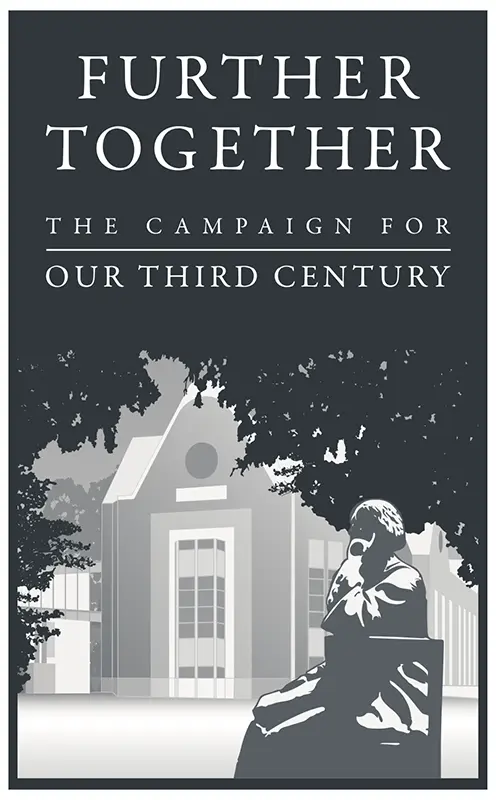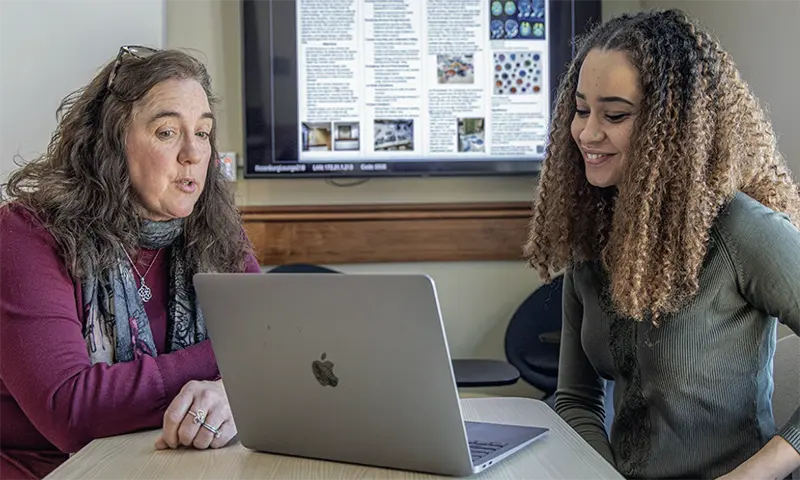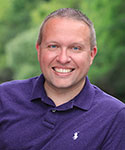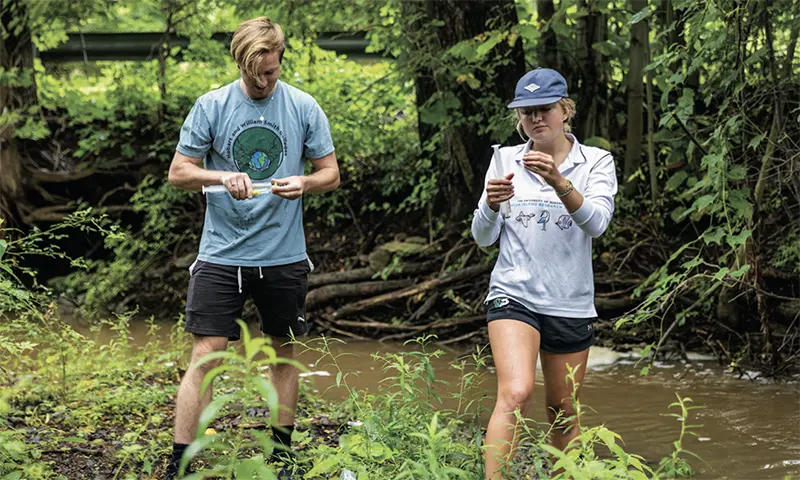The Pulteney Street SurveySummer '24

ACADEMIC EXCELLENCE
Exceptional faculty. Unparalleled research opportunities. Academic programs that equip students to explore and grapple with the world’s most pressing challenges.
FOR 200 YEARS, teaching and learning at HWS have revolved around these core assets, preparing graduates to make a difference as critical thinkers, skilled communicators, open-minded innovators and principled leaders.
“With Further Together, we have the opportunity to double down on our interdisciplinary liberal arts and sciences education,” says Provost and Dean of Faculty Sarah Kirk. “This is the moment to invest in opportunities, resources and facilities that go beyond the status quo to best serve our students for the dynamic future they will graduate into.”
The $75 million campaign goal for academic funding will support three key areas: the construction of an integrated science center housing more than a dozen academic programs; summer research opportunities that pave the way for student success after graduation; and endowed professorships fostering deeper scholarship, closer mentorship and richer academic experiences.
Nation’s Best: HWS faculty rank among the top 25 in the nation according to the Princeton Review.
NEW ENDOWED PROFESSORSHIPS will recognize exceptional teaching and research, increasing opportunities and resources for faculty scholarship and academic initiatives.

Professor of Biology Kristy Kenyon, who holds the endowed Philip J. Moorad and Margaret N. Moorad Professor in the Sciences, meets with Anya Davis ‘24.
CAPTURING THE WONDER
“By displaying art that captures the wonder of scientific discoveries, I wanted to encourage the community to ask questions and delve deeper into scientific topics,” says Anya Davis ’24, a double major in biology and studio art. During her summer research project with Professor of Biology Kristy Kenyon, the Philip J. Moorad and Margaret N. Moorad Professor in the Sciences, Davis produced two art installations that depict research by HWS students and faculty. Davis’s screen prints depict brain scans inspired by the neurological research of Biology Department faculty; her series of hand-painted, three-dimensional petri dishes mimic culture cells from the Biology and Chemistry Department labs. Now displayed in Rosenberg Hall, the works bridge “the worlds of art and science…while encouraging dialogue, collaboration and a shared appreciation for the beauty of both fields,” Davis says.
A STATE-OF-THE-ART INTEGRATED SCIENCE HUB will provide interdisciplinary teaching and lab spaces that support collaborations across disciplines and showcase the sophistication of the HWS science curriculum.
THE BIG PICTURE

“Our current science facilities are built for a different time, when biologists did biology and geoscientists did geoscience,” says Professor of Geoscience and Associate Provost for Faculty Affairs and Development Nick Metz (right).
Times have changed. “Increasingly, the really interesting problems are found in the interdisciplinary cracks between the different majors,” Metz says. “Our faculty is already doing this kind of research, and the new space will enable faculty to be that much more collaborative, so students can see more clearly these interdisciplinary connections and the way research is done in the 21st century.”
DID YOU KNOW? Biology, Environmental Studies and Health Professions are among the TOP TEN academic interests for the Class of 2027. 80% of first-time medical and dental school applicants from HWS are accepted —much higher than the national average.
HWS STEM faculty were awarded nearly $2.5 MILLION in outside grant funding in 2023.
Metz points to Professor of Biology Patricia Mowery and Professor of Chemistry Eric Pelkey, “who have a grant from the National Institutes of Health to create new compounds that help prevent cancer,” and scholarship that “cuts across the natural sciences and social sciences, like Professor of Biology Kristy Kenyon and Professor of Sociology Renee Monson, looking at reproduction from both scientific and sociological perspectives.”
“Science is constantly being renewed.… It’s a discipline in understanding how new knowledge can be used to improve the world we live in. This is very important for all of us.” DR. EDWARD TAPPER ’64, who created the Edward J. Tapper M.D. ’64 Science Research Fund, supporting hands-on research opportunities for HWS students
“It’s clear that our faculty are creative, thoughtful, interdisciplinary researchers,” Metz says. “They are doing amazing things — and this new science hub will allow us to create an outstanding destination for the kind of research and mentorship that changes lives.”
EXPANDED SUMMER RESEARCH OPPORTUNITIES will enable more students to work side-by-side with faculty while studying emerging issues, technologies and ways of thinking.

Working with the Finger Lakes Institute last summer, research interns Dylan Meyer ’26 and Hannah Matter ’24 tested water samples for herbicides and insecticides at the HWS Henry Hanley Biological Field Preserve.
HANDS-ON
Working with the Finger Lakes Institute last summer, research interns Dylan Meyer ’26 and Hannah Matter ’24 (pictured above) tested water samples for herbicides and insecticides at the HWS Henry Hanley Biological Field Preserve. The project is part of the FLI’s ongoing, student-supported work to serve the region’s environment, economy and residents.
Each year, more than 100 students work closely with faculty and staff on cutting-edge research with important applications — from pharmaceutical development to the ethics of artificial intelligence, gravitational waves to human cognition. On campus and off, students explore subjects such as planetary systems, plant genomics, the chemistry of art, watershed management, invasive species, religious extremism, the economy of the Finger Lakes, extreme weather, and myriad other interdisciplinary topics that resonate far beyond campus.
